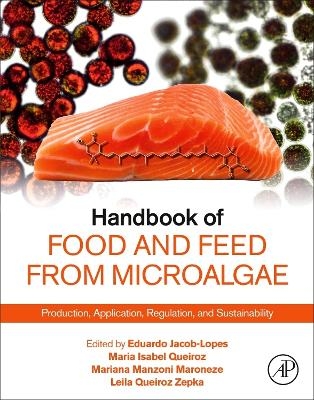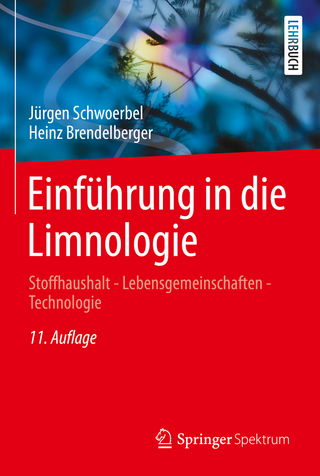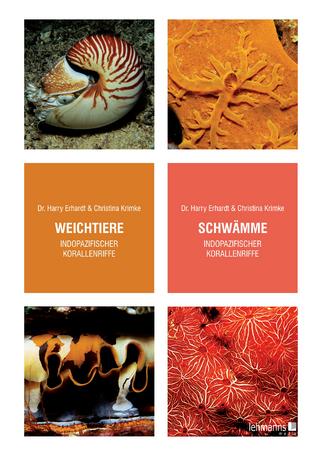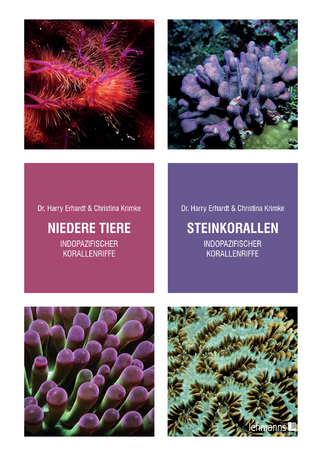
Handbook of Food and Feed from Microalgae
Academic Press Inc (Verlag)
978-0-323-99196-4 (ISBN)
Prof. Eduardo Jacob-Lopes is currently associate professor at the Department of Food Technology and Science, Federal University of Santa Maria, Brazil. He has more than 18 years of teaching and research experience. He is a technical and scientific consultant of several companies, agencies, and scientific journals. He has more than 600 publications/communications and has registered 15 patents. His research interest includes biotechnology and bioengineering with emphasis on microalgal biotechnology. Dr. Maria Isabel Queiroz is a retired professor at the Department of Chemistry and Food, Federal University of Rio Grande. She has more than 30 years of teaching and research experience. He has published more than 500 scientific publications. Her research interest includes microalgal biotechnology with emphasis on bioprocesses. Dr. Mariana Manzoni Maroneze is a researcher at the Institute of Biotechnology, National Autonomous University of Mexico (UNAM). She has published more than 65 scientific publications/communications, which include a book, book chapters, original research papers, research communications in national and international conferences, and patents. She acts as a reviewer for several international journals. Her research focuses on microalgae-based process and products. Dr. Leila Queiroz Zepka is currently an Associate professor at the Department of Food Technology and Science, Federal University of Santa Maria (UFSM). She has more than 15 years of teaching and research experience. She has published more than 500 scientific publications/communications, which include 10 books, 50 book chapters, 100 original research papers, 350 research communications in national and international conferences, and 12 patents. She is a member of the editorial board of 5 journals and acts as a reviewer for several national and international journals. Her research interest includes microalgal biotechnology with an emphasis on microalgae-based products.
1. Food and feed from microalgae: A historical perspective
2. Biodiversity and biogeography of microalgae with food and feed potential
3. Mass production of microalgae for nutritional purposes
4. Commercial facilities of microalgae food and feed products around the world
5. Downstream processing of microalgae for food ingredients in industrial application
6. Microalgae as a source of alternative protein
7. Lipids and fatty acids from microalgae
8. Intracellular and exocellular carbohydrates in microalgae
9. Minerals, and trace elements in microalgal biomass
10. Vitamins from microalgae
11. Food enzymes from microalgae
12. Microalgal Carotenoids
13. Microalgal chlorophylls
14. Microalgal phycobiliproteins
15. Microalgae sterols
16. Volatile and semi-volatile organic compounds as food ingredients
17. DHA- and EPA-rich oil from microalgae
18. β-carotene from Dunaliella: Production, applications and advances
19. Astaxanthin from Haematococcus: Production, applications and advances
20. Phycocyanin from Arthrospira: Production, applications and advances
21. Antioxidant and antifungal compounds from microalgae
22. Microalgae as a source of preservatives in food/feed chain
23. Microalgae-based products and their immunomodulatory activities
24. Techno-functional properties of microalgae in food products
25. Microalgae as a key ingredient in meat analogues
26. Application of microalgae in baked goods and pasta
27. Microalgae added to beverages, dairy, prebiotic and probiotic products
28. Microalgae in phycogastronomy
29. Microalgae as dietary supplements in tablet, capsule, and powder
30. Encapsulation of microalgae-based products for food and feed applications
31. Microalgae application in feeds for ruminants
32. Microalgae application in feeds for monogastrics
33. Microalgae application in aquaculture feed
34. Microalgae application in poultry feed
35. Microalgae application in bivalve mollusks feed
36. Microalgae in pet food
37. The next generation of commercial microalgae-based foods
38. Technological bottlenecks of the use of microalgae in food
39. Microalgae as source of bioaccessible and bioavailable compounds
40. Disruptive technologies to improve the performance of microalgae cultures
41. Sensorial characters of microalgae biomass and its individual components
42. Microalgae in food and feed: Safety and toxicological aspects
43. Quality control of microalgae-based products
44. Analytical protocols applied to the analysis of microalgal biomass
45. Global market opportunities of food and feed products from microalgae
46. Sustainability metrics in the microalgae-based ingredients production
47. Food commodities and fine chemicals from microalgae: A close look at economics
48. Strategy and design of innovation policy road mapping for microalgae-based foods
| Erscheinungsdatum | 10.07.2023 |
|---|---|
| Verlagsort | Oxford |
| Sprache | englisch |
| Maße | 216 x 276 mm |
| Gewicht | 1840 g |
| Themenwelt | Naturwissenschaften ► Biologie ► Limnologie / Meeresbiologie |
| Technik ► Lebensmitteltechnologie | |
| Weitere Fachgebiete ► Land- / Forstwirtschaft / Fischerei | |
| ISBN-10 | 0-323-99196-3 / 0323991963 |
| ISBN-13 | 978-0-323-99196-4 / 9780323991964 |
| Zustand | Neuware |
| Informationen gemäß Produktsicherheitsverordnung (GPSR) | |
| Haben Sie eine Frage zum Produkt? |
aus dem Bereich


